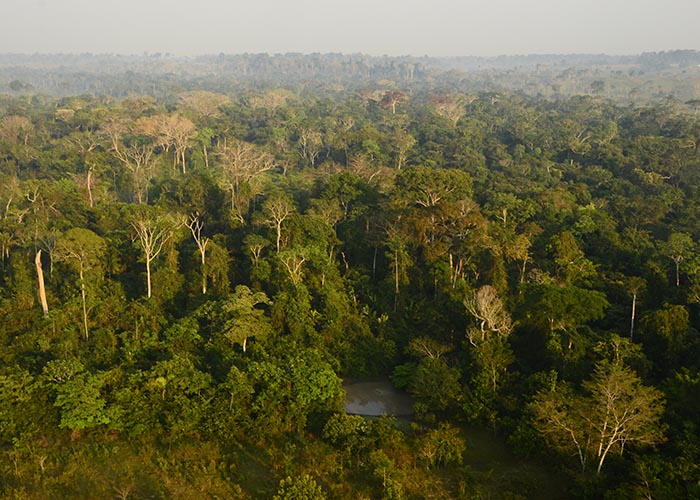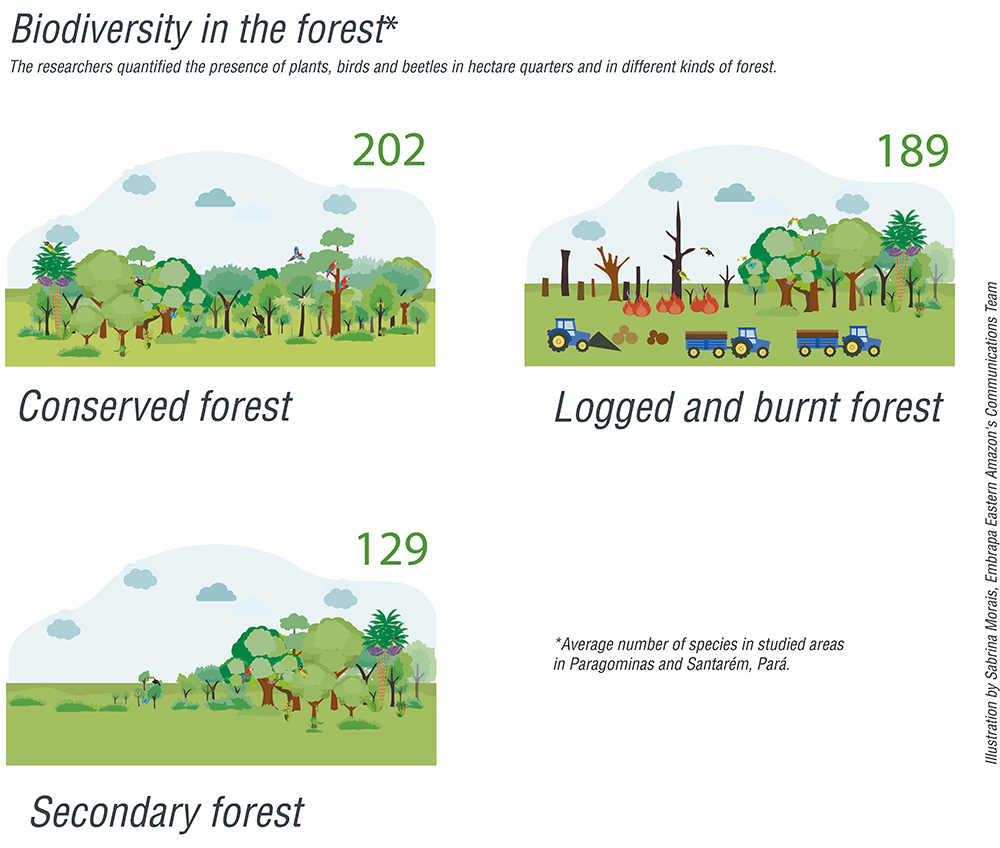Carbon-focused Amazon conservation may fail to protect biodiversity
Carbon-focused Amazon conservation may fail to protect biodiversity
Protecting carbon stocks in tropical forests, especially the Amazon Forest, is one of the main goals of public policy and of action by environmental organizations in the whole world to fight climate change. However, a study published yesterday (Jul 16) by Nature Climate Change,the leading journal on the subject in the world, shows that carbon-focused conservation can lead to shortfalls of up to 75% in species protection in ecologically valuable forests.
The work led by researchers from Embrapa Eastern Amazon and from the Lancaster Environment Center, at the University of Lancaster, in the United Kingdom, stemmed from the following question: do the measures of carbon protection in tropical forests also ensure the survival of plant and animal species in those sites?
The answer to this question is complex, but researchers discovered that the investments destined to prevent massive carbon losses in tropical forests are less efficient for biodiversity in ecologically valuable forests. That is, in those forests (which are the most conserved), species richness in biodiversity is not protected when only the carbon stocks are considered.
“Protecting carbon stocks in tropical forests must remain a central goal in conservation and forest restoration policies. However, to ensure the maintenance of species richness in such areas, the biodiversity also has to be addressed as a central focus os such efforts”, warns the researcher Joice Ferreira, from Embrapa Eastern Amazon, one of the main authors of the paper.
The relationship between carbon and biodiversity
To reach the main conclusions, the team spent 18 months taking measurements of the carbon content and of the variety of plant, bird and beetle species in 234 areas around the towns of Paragominas and Santarém, in Pará state, Eastern Amazon region. Four types of forests were analyzed: undisturbed or little disturbed primary forests; logged forests; logged and burn forests; and secondary forest, those that have already gone through interventions and are in the process of recovery.
The team discovered that more carbon only meant more biodiversity in severely damaged forests, especially secondary ones and those that had suffered from logging and burning. On the other hand, in those areas where human impacts were less intense, increasing amounts of carbon were not followed by more species richness. In practice, growth in biodiversity and in carbon stocks go hand in hand in the most damaged areas, but the same does not happen in more conserved areas.
For the researcher Joice Ferreira, the change in the relationship between carbon and biodiversity in the forests that had suffered different levels of disturbance caused by human action explains the results obtained. As deforested and highly disturbed locations recover from the effect of logging and serious forest fires, biodiversity also recovers. However, the direct relationship between carbon and biodiversity is lost at intermediary stages of recovery. The result: the forests with the highest carbon content do not necessarily harbor most species.
“This happens because in the areas where human action is more intense, the disturbance is the main factor that drives the characteristics of the areas. Thus carbon and biodiversity recover concomitantly. However, in a forest without human action, for instance, the factors that rule over plant and animal characteristics are diverse, such as the type of soil, luminosity, rainfall, competition between species, and others. That is why, in this in case, carbon and biodiversity do not correlate”, the specialist explains.
Double focus for conservation and forest restoration action
Tropical forests store over a third of all of the world's soil carbon. Phenomena caused by human action, such as deforestation and forest disturbances (selective timber extraction, hunting, fires and forest fragmentation) can cause carbon emissions and worsen the effect of global warming. Hence carbon protection in tropical forests is one of the main goals of international initiatives to fight climate change, attracting dozens of billions of dollars in funding every year.
“The measures to protect carbon stocks can not only decelerate the effects of climate change, but also have the potential to protect the unique, irreplaceable wildlife of tropical forests. But for this purpose it is fundamental to place biodiversity at the same level of importance of carbon”, states Gareth Lennox, one of the main authors of the study and researcher at the University of Lancaster.
Toby Gardner, researcher from the Stockholm Environment Institute, in Sweden, and also coauthor of the paper, explains the importance of having a broader conservation approach. “When considering carbon and biodiversity combined, we have found that, for instance, the number of species of large trees that can be protected increases by up to 15% in comparison with the solely carbon-focused approach.”
The research offers guidelines for the alignment of the carbon and biodiversity conservation efforts, especially in forest rehabilitation activities. “The results can guide the government in the choice of priority areas for forest recovery programs, for the compensation of environmental liabilities”, highlights Joice Ferreira, from Embrapa.
“Even though some losses are inevitable, the conflicts between carbon and biodiversity strategies can be reduced through planning that is more integrated at territorial level”, posits the scientist from the University of Lancaster, Jos Barlow, one of the coauthors of the study.
Translation: Mariana Medeiros
Ana Laura Lima (MTb 1268/PA)
Embrapa Eastern Amazon
Press inquiries
amazonia-oriental.imprensa@embrapa.br
Phone number: +55 91 3204-1200 / 99110-5115
Further information on the topic
Citizen Attention Service (SAC)
www.embrapa.br/contact-us/sac/



